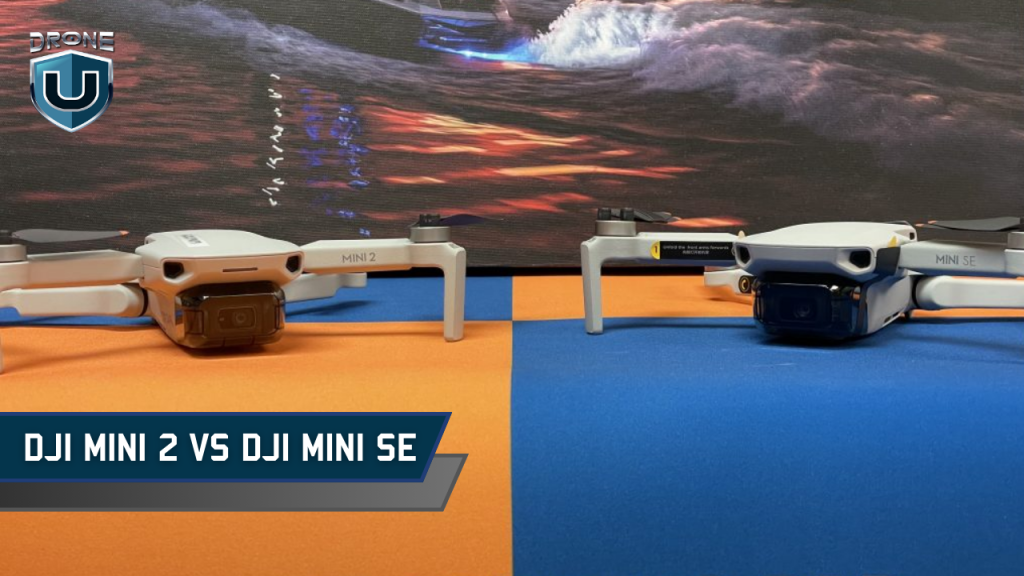
When it comes to compact and lightweight drones, DJI has become a leading name in the market. Two of its compact offerings, the Mini 2 and the Mini SE, have tempted drone enthusiasts for quite some time.
Both boast impressive features and capabilities, condensed into a palm-sized design for ultimate portability.
However, with their varying specifications and price points, choosing between them can be tricky.
This article will break down the key differences between the DJI Mini 2 and the Mini SE, evaluating their strengths, weaknesses, and suitability for different use cases.
So you can pick a drone that best fits your needs and budget.
Let’s jump in right away.
The Criteria We Choose to Compare DJI Mini 2 vs. Mini SE
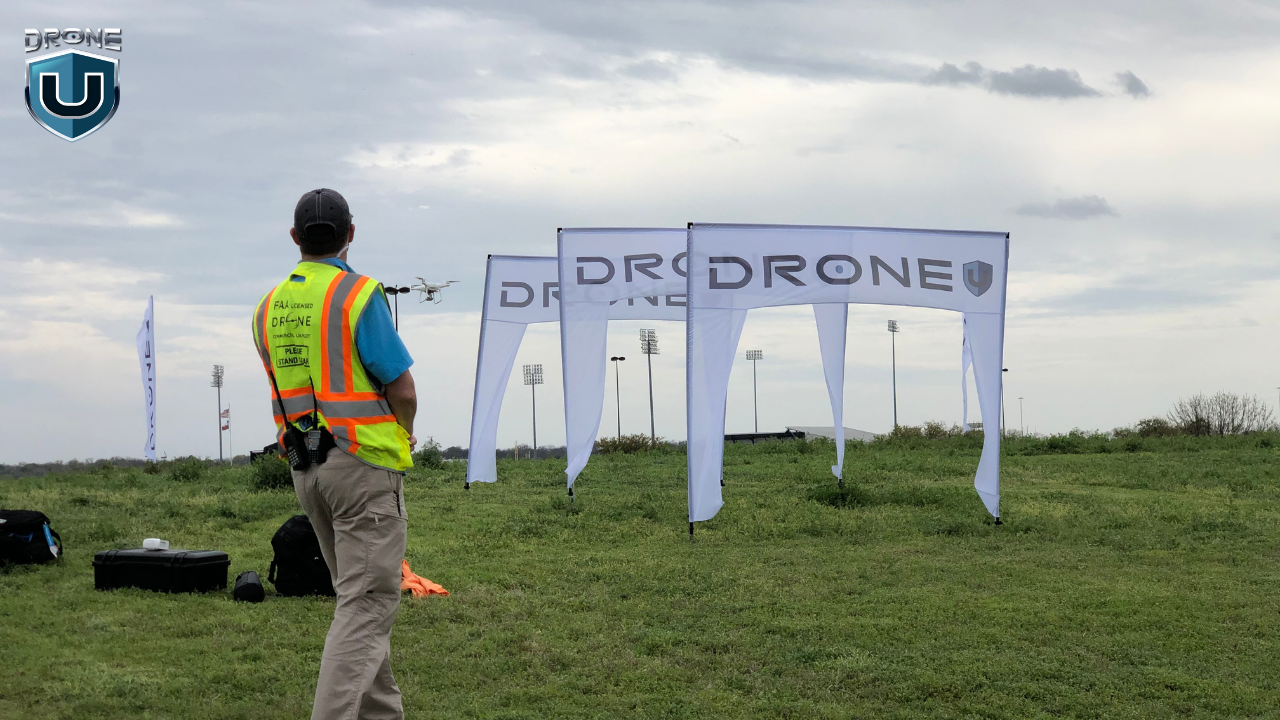
Here are the key factors we’ve used to compare the drones.
1. Camera Functionality
You need to pay close attention to the sensor size and resolution if you want to make sure your images and videos look as crisp as can be.
2. Flight Performance
Flight time is a paramount consideration.
If you plan on capturing extensive landscapes or require prolonged flight times, prioritize drones with longer battery life or the ability to swap batteries efficiently.
3. Controller and Connectivity
The controller serves as your command center and it is important to understand the strengths and weaknesses for each. , For instance, if you’re planning on flying in extreme temperatures, you need to make sure the controller’s operating range can withstand those conditions.
4. Additional Features
Explore features like intelligent flight modes that simplify capturing professional-looking cinematic shots, panorama modes for capturing expansive vistas, digital zoom for obtaining close-up details, and subject tracking for maintaining focus on moving targets.
Research the unique features offered by each drone to identify the one that aligns perfectly with your creative vision.
Now, let’s compare DJI Mini 2 vs. Mini SE on these parameters and see how they stack up.
1. Camera Qualities
 Source: DJI
Source: DJI
Camera is one of the significant factors that everyone considers before buying a drone. If you like taking aerial shots then this alone can be a deciding factor for you. So, let’s discover how these models stand against each other in terms of camera capabilities.
| Specifications | DJI Mini 2 | DJI Mini SE |
| Sensor | 1/2.3” CMOS ; Effective Pixels: 12 MP | 1/2.3” CMOS ; Effective Pixels: 12 MP |
| Shutter Speed | Electronic Shutter: 4-1/8000s | Electronic Shutter: 4-1/8000s |
| ISO Range | 100-3200 (Auto & Manual) | 100-3200 (Auto & Manual) |
| Max Image Size | 4:3: 4000×3000 & 16:9: 4000×2250 | 4:3: 4000×3000 & 16:9: 4000×2250 |
| Photo Format | JPEG/DNG (RAW) | JPEG |
| Video Format | MP4 (H.264/MPEG-4 AVC) | MP4 (H.264/MPEG-4 AVC) |
| Max Video Bitrate | 100 Mbps | 40 Mbps |
| Video Resolution | 4K: 3840×2160 | 2.7K: 2720×1530 |
The DJI Mini 2 features a 1/2.3-inch CMOS sensor that captures 12MP photos and 4K video at 30fps. It also has a 3-axis gimbal for stable footage and supports various shooting modes like HDR, panorama, and time-lapse.
On the other hand, the Mini SE has a smaller 1/2.3-inch sensor capable of 2.7K video at 30fps and 12MP stills. While the Mini SE lacks a mechanical gimbal, it uses electronic image stabilization (EIS) to reduce shakiness.
If you prioritize professional or high-quality productions, the Mini 2 wins here.
2. Flight Performance
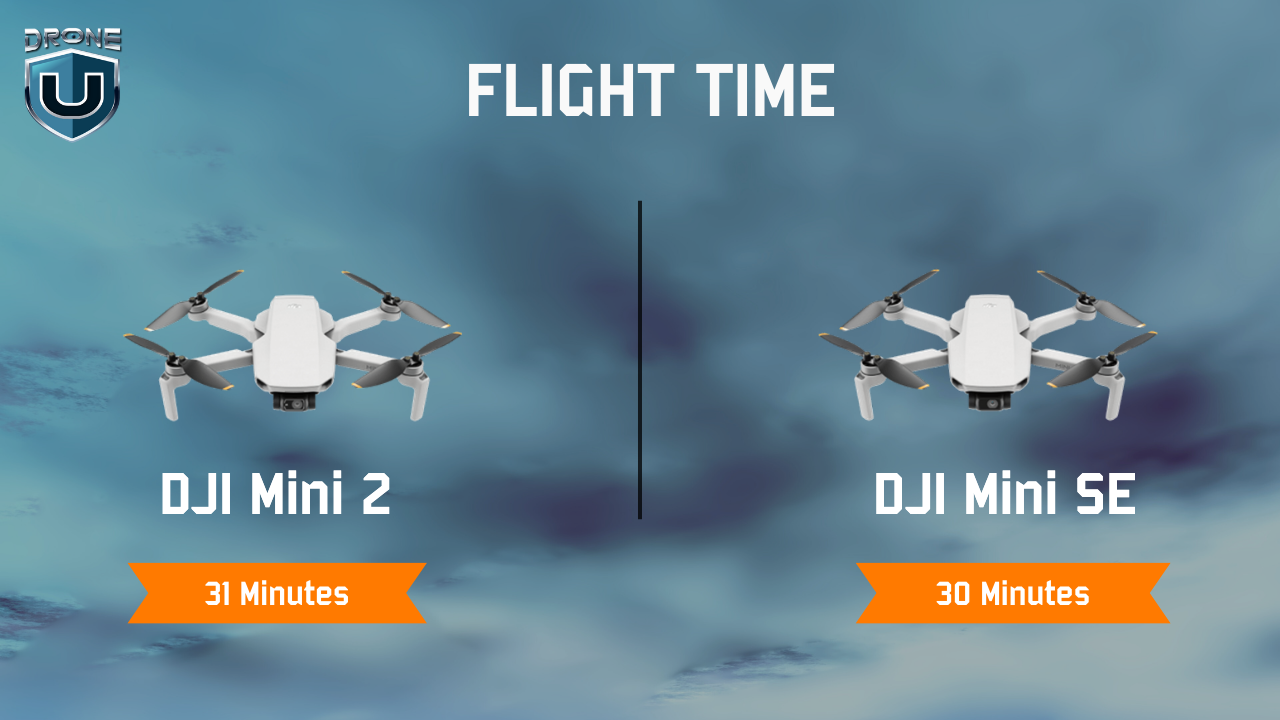
While choosing a drone it is critical to focus on their flight capabilities like maneuverability, speed, and stability. Let’s see how well they perform in the air, and who wins here.
| Specification | DJI Mini 2 | DJI Mini SE |
| Max Flight Time | 31 mins | 30 minutes |
| Operating Temperature | 0° to 40°C (32° to 104°F) | 0° to 40°C (32° to 104°F) |
| Max Hovering Accuracy | Vertical: ±0.1 m ; Horizontal: ±0.3 m | Vertical: ±0.1 m ; Horizontal: ±0.3 m |
| Max Speed (at sea level, no wind) | 16 m/s (S Mode), 10 m/s (N Mode), 6 m/s (C Mode) | 13 m/s (S Mode), 8 m/s (P Mode), 4 m/s (C Mode) |
| Max Wind Speed Resistance | 8.5-10.5 m/s (Scale 5) | 8.5 m/s to 10.5m/s (Scale 5) |
| Sensing System | Downward | Downward |
| Gimbal stabilization | 3-axis | 3-axis |
| Transmission Technology | OcuSync 2.0 | Wi-Fi |
Do you need to capture fast-moving subjects or need the drone to handle strong winds? The Mini 2 boasts a higher top speed (57 kph) and potentially better wind resistance compared to the Mini SE (46 kph).
Since the DJI Mini 2 boasts a higher top speed and might handle stronger gusts better. This is important if you plan to fly in windy conditions or need to capture fast-moving subjects.
Moreover, the Mini 2 has DJI’s OcuSync 2.0 technology, offering a longer and more stable video transmission range (up to 10km) while the Mini SE offers a Wi-Fi signal (up to 4km).
3. Remote Controller
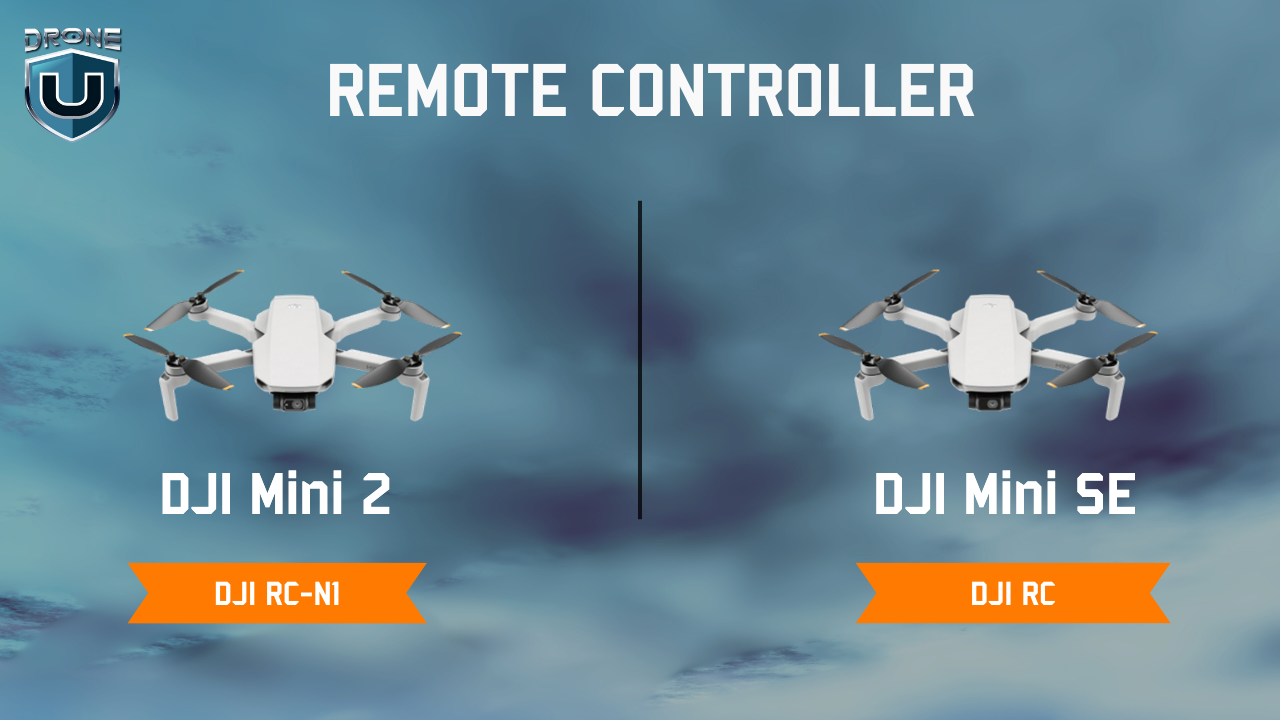
Your drone flying experience greatly depends on your choice of remote controller. Let’s figure out which drone offers a better remote controller.
| Specification | DJI Mini 2 | DJI Mini SE |
| Supported USB Port Types | Lightning Micro USB (Type-B) USB-C | Lightning, Micro USB (Type-B), USB Type-C |
| Operating temperature | -10° to 40° C | 0° to 40° C |
| Max. Bitrate | 8 Mbps | 4 Mbps |
| Live View Quality | 720p/30fps | 720p/30fps |
Similar to the original Mini drone, the remote control for the Mini SE folds up tiny and can fit in a backpack. It also features detachable joysticks for even more portable travel.
On the other hand, Mini 2’s remote offers a more robust design that is more comfortable to grip. It gives you a longer transmission range as compared to the Mini SE remote.
The Mini SE remote may be the best option if you prefer maximum mobility.
4. Additional Features
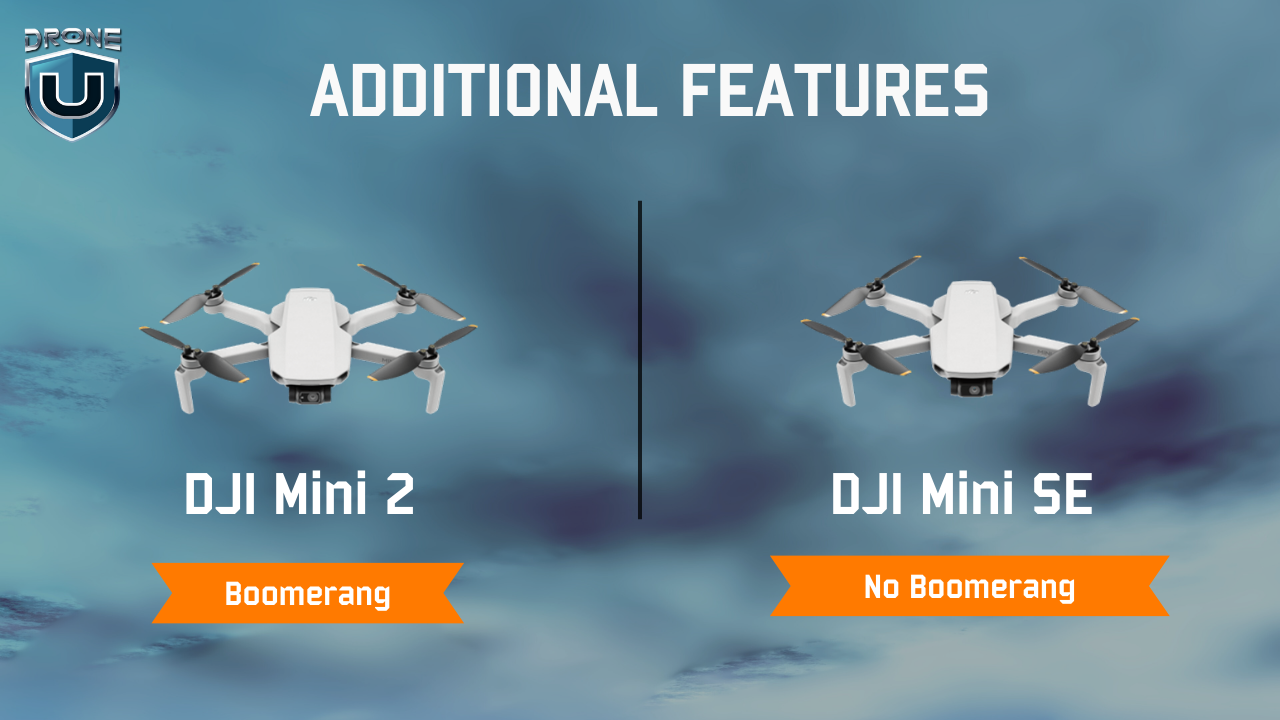
When buying a drone, don’t forget to look at the additional features that come with it. Let’s examine which drone takes the crown here.
| Specifications | DJI Mini 2 | DJI Mini SE |
| Still photography modes | Single Shot
Interval: JPEG: 2/3/5/7/10/15/20/30/60 s JPEG+RAW: 5/7/10/15/20/30/60 s Panorama: Sphere, 180°, and Wide-angle |
Single shot
Interval: 2/3/5/7/10/15/20/30/60 s |
| QuickShot modes | Dronie, Helix, Rocket, Circle, Boomerang | Dronie, Helix, Rocket, Circle |
| Battery Capacity | 2250 mAh | 2250 mAh |
| Battery Type | LiPo 2S | LiPo 2S |
| Global Navigation Satellite System | GPS + GLONASS + Galileo | GPS + GLONASS |
DJI Mini 2 vs. Mini SE Features Comparison
This table shows a detailed comparison between the models. This way you can understand the features of both models. So, here’s a breakdown of the specifications.
| Feature | DJI Mini 2 | DJI Mini SE |
| Weight | < 249 g | < 249 g |
| Flight Time | 31 mins | 30 mins |
| Camera | 1/2.3” CMOS
Effective Pixels: 12 MP |
1/2.3” CMOS
Effective Pixels: 12 MP |
| Dimensions | Folded: 138×81×58 mm
Unfolded (with propellers): 245×289×56 mm |
Folded: 138×81×58 mm
Unfolded (with propellers): 245×289×56 mm |
| Range | 10 km | 4 km |
| Wind Resistance | 8.5-10.5 m/s (Scale 5) | 8.5-10.5 m/s (Scale 5) |
| Pros |
|
|
| Cons |
|
|
Now that you’ve explored the features, here are our recommendations for purchasing the drone based on specific user needs.
Choosing the Right Drone: DJI Mini SE vs Mini 2
When it comes to choosing between these two highly capable birds, there are no right or wrong answers. To make your decision easier, it is important to take a closer look at your priorities and needs.
1. Purpose and Intended Use
Determine your primary purpose for getting a drone – whether it’s for aerial photography, videography, inspection, mapping, or recreational flying. Different drones are designed with specific use cases in mind, so identifying your needs will help narrow down your options.
2. Regulations and Laws
Research the regulations and laws regarding drone operations in your area. Many countries and regions have specific rules about drone registration, licensing, no-fly zones, and maximum altitude limits. Ensure you understand and comply with these regulations.
3. Camera and Image Quality
If aerial photography or videography is your main goal, prioritize drones with high-quality cameras and advanced stabilization features like gimbals. Consider factors like sensor size, resolution, frame rates, and shooting modes.
4. Portability and Weight
If you plan to travel with your drone or hike to remote locations, portability and weight become crucial factors. Look for compact, foldable drones that are lightweight and easy to transport.
5. Intelligent Features and Automation
Advanced drones often come with intelligent features like obstacle avoidance, subject tracking, automated flight modes, and programmed camera movements. Evaluate your need for these features based on your skill level and intended use.
6. Battery Life and Spare Batteries
Consider the battery life and the availability and cost of spare batteries. Longer flight times may require additional batteries, which can add to the overall cost.
7. Budget
Drones can range from affordable entry-level models to high-end professional units. Determine your budget and prioritize the features that are most important to you while keeping costs in mind.
8. User Experience and Support
Research the user experience and support offered by the manufacturer. Look for drones with intuitive controls, reliable apps or software, and good customer support in case you need assistance.
These factors can help you make an informed decision and choose a drone that aligns with your specific needs, skill level, and budget.
Final Thoughts
The DJI Mini SE is a great choice for beginners on a budget who want a simple-to-use drone with good enough image quality. It’s lightweight, portable, and lets you learn the ropes without a huge investment.
Whereas, the DJI Mini 2 is ideal for beginners who prioritize image quality, flight performance, and a more comfortable flying experience. The extra features and better specs come at a higher price, but it offers a more capable drone for capturing stunning aerial footage.
The key is taking the time to do your homework and figure out what matters most to you.
At the end of the day, you want to make sure you’re getting a bird that can keep up with your ambitions and style.
So, keep learning, and happy flying!
Frequently Asked Questions
1. Is DJI Mini SE better than DJI Mini 2?
For most users, the DJI Mini 2 offers a more versatile and capable platform with better image quality, performance, features, and a more reliable transmission system. However, if you’re on a tight budget and prioritize a basic, easy-to-fly drone, the DJI Mini SE can be a good starting point.
2. What is the difference between the DJI Mini 2 and SE photo?
The main difference between DJI Mini 2 and Mini SE photos comes down to resolution and potential for better quality:
Both cameras capture 12-megapixel photos. However, the Mini 2 might have a slight edge due to a potentially better sensor. The Mini 2’s potential sensor and processing advantages could result in less noise and better detail in low-light photos compared to the Mini SE.
3. What is the difference between DJI Mini 2 and Mini 3?
The DJI Mini 3 offers significant improvements in camera quality, flight time, and transmission range compared to the Mini 2. However, it comes at a higher price point. Whereas, the Mini 2 remains a great option for those who prioritize affordability while still offering good image quality and performance. To know more about DJI Mini 3, you can check this article – DJI Mini 3 vs Mini 3 Pro.
4. Is the Mini SE better than Mavic Mini?
While the Mavic Mini was a good starter drone, the Mini SE offers some improvements, especially in terms of wind resistance, flight time, and controller design.
For most users, the DJI Mini SE is the better choice due to its better performance, newer technology, and potentially easier availability.







Add Your Comment